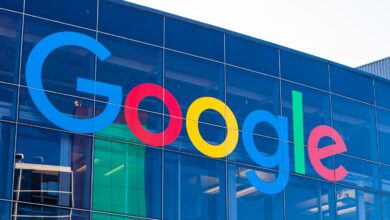Top 10 hurdles and how to overcome them

Your online reputation is what users can learn about your brand within a few seconds.
But today, it’s not only about what users might think. We also need to care about AI.
In this article, you will learn:
- How to properly monitor what is said about your brand online across different platforms.
- Why not all Amazon mentions might lead to the ecommerce giant (and what it means for AI).
- How the right strategy and different processes can defend your brand from potential threats.
1. Who will give the answers? Generative AI might
Generative AI has become a significant topic for brands worldwide.
The growing number of users researching AI-powered platforms gives us an idea about just how big the issue may become.


Even non-marketers use chatbots linked to platforms such as OpenAI to ask everyday questions. This is made much easier by chatbot platforms like Botpress or Messagebird.
The search landscape is changing heavily. As a result, online reputation management (ORM) will never be the same.
In the past months, numerous tests showed critical shortcomings, such as:
A sustainable strategy to protect your brand from generative AI issues is to control the input. Language models are very likely to use various sources on the web to feed their algorithms to get text samples and understand the facts.
A brand (business or personal) that triggers a knowledge panel on Google is very likely to be in a good place when it comes to the semantic part of ORM.
Generative AI will use more of its internal knowledge management systems to produce more accurate answers, considering real and understood facts.
To proactively control the narrative, it’s critical to work on connecting your brand to appropriate semantic fields to make it easier for language models to comprehend:
- What you do.
- Who you do it for.
- What products or services you offer to fulfill your promise.
In practical terms, this might mean tying the brand’s context to descriptive terminology around the skill level, price point or specific targeting:
- Online courses could talk more about the applications of their courses and different levels of experience (e.g., beginner Spanish courses).
- Ecommerce sites might want to specify their target audience (e.g., woodworking surfing supplies for experienced surfers).
- Car repair shops might indicate their focus on luxury cars (e.g., car repair shop for luxury vehicles).
As so often, input = output. The more you control the narrative on your website and other sites about your brand, the higher the chances that language models pick up the right information and reproduce it in the right contexts in generative answers.
2. Ambiguous semantics
Semantics aren’t always clear: It often takes multiple semantic entities to be presented in the right context to allow NLP engines to actually comprehend what the text is about.
The free Kalicube Copywriting Analyzer Tool allows everybody to ask Google’s NLP engine through their API about its understanding of a sample text.
Look at these examples and Google’s understanding in parentheses:
- “I just love the Amazon in Brazil.” (Amazon = “Other”)
- “I just love Amazon in Brazil.” (Amazon = Organization)
- “I love taking pictures of the Amazon River.” (Amazon = Organization?)
- “I love taking pictures of the Amazon River.” (Amazon River = Location)
These examples illustrate how hard it can be for neurolinguistic processing engines to grasp what a text is about.
Context is king when it comes to getting an NLP engine to comprehend what your page is about. Make sure your content is tied to enough context to be unambiguous while paying attention to different spellings, synonyms, uppercase and lowercase versions, etc.
Just because there is text on a page that a human can fully understand doesn’t mean a machine can take away the same information.
3. User-generated content and Reddit
Online reputation management needs to focus on what gets the attention online. Very often, user-generated content (UGC) accounts for a major share of that. Users generate content in different formats, such as YouTube videos, podcasts, images and posts.
Given Google’s partnership with Reddit, the widespread community network has become a critical priority for ORM.
Many branded and product-related searches will trigger one or more Reddit threads. In addition, Google’s Gemini could leverage Reddit’s content as training data for its language models.
Actively monitor Reddit and maintain a few official users representing your brand. Look into creating new threads and start participating in existing discussions around your brand and contextually related topics.
To control the narrative (and the training data for a potential SGE roll-out), maintain a positive and helpful attitude and try to lead users with negative experiences off Reddit and into your email support desk where you provide real help, compensation or other benefits to minimize the damage.
Dig deeper: How to repair your Google search results and reclaim your online reputation
4. Lack of proper monitoring
The more popular brand, the more mentions there are on the web.
Tools like Google Alerts can enable an easy and free entry point for monitoring mentions of a brand (add different spellings) and its products or services.
However, Google Alerts is limited to indexed pages only. It will alert you by email about what is coming up in Google Search, while leaving you in the dark about most social media posts, threads and comments sections.
Effective brand mentions monitoring requires using (usually paid) third-party tools that search through a variety of platforms and consolidate all mentions in a user-friendly report, ideally with an indication of the sentiment of the different mentions.
But here is why monitoring mentions is even more complex than that:
How should a brand possibly know what kind of information is being presented through generative AI on Google and all the other major platforms out there?
Brands can hope Google might provide some kind of tracking through Google Search Console, but at the moment, it only seems that Google SGE heavily impacts many brand and product searches.
If a brand wants to know how it is being portrayed across the different platforms, the simplest way is to query them manually (or set up an integration using third-party tools or Google Sheets plugins, etc.) to help with that. It’s not perfect, but it might give you hints on what to do next.
There is no excuse for not configuring a series of the most important Google Alerts to monitor your brand name, your main products’ names and their most essential spelling variations.
If your brand is frequently mentioned on social media platforms, you should sign up for a paid tool to cover content that Google might not index.
Besides, it wouldn’t hurt to assign a team member to frequently query the most important AI tools with defined transactional queries about your brand and products to understand the topics and applications associated with the brand. Then, react accordingly to their output by finding the likely source of unwanted information and aim to balance it out.
Get the daily newsletter search marketers rely on.
5. Google reviews
One of the most common requests an ORM agency gets is to remove a negative Google review. Negative reviews directly impact the experience of search users as they see the review stars on Google Business Profiles.
Google and other engines might also use review data to train their language models, so dealing with positive and negative reviews is crucial.
Happy customers don’t leave reviews until someone asks for them. Make sure you have a process in place to proactively build up positive and context-rich Google reviews from real, happy customers.
Somebody from your brand should respond to every review. Ideally, you can provide even more contextual information to enrich the review semantics and balance negative sentiments.
Dealing with negative reviews promptly and constructively and offering assistance via email could prevent an unhappy customer from venting their frustration on other platforms like Reddit.
6. Competitors and affiliates
Imagine a potential customer searches for your brand name, flagship product or founder’s name. At the top of the SERPs, they will likely find the brand website, about page or product page.
However, when you don’t pay attention to your online reputation, potential clients will often see competing domains and affiliate sites near the top of the SERPs.
Imagine spending thousands of dollars on ads to raise brand awareness. But instead, you might be driving clients directly to their competitors.
While your brand’s ad spend will go through the roof, the competitor’s SEO consultant might get a bigger retainer for their strategic thinking.
You can achieve the most effortless conversion through branded searches. Somebody already searching for Nike shoes is very likely to buy them.
Affiliates have been leveraging this for years by first trying to rank for the brand or product they are running affiliate marketing for.
Your brand must dominate the top of the SERPs for your brand name. This includes brand websites, product websites and social media networks.
7. Competing ads showing for your brand name
Another sneaky way for competitors to get a brand’s attention is through running ads on a brand’s name.
Amazon has been doing this for years. For example, searches for “Adidas shoes” will likely trigger Amazon ads. This even happens at a smaller scale, where regional or national classified car portals might try to run ads on local car dealerships’ names.
Tests show that an important percentage of users searching for a brand will not click through to the brand’s website but elsewhere on page 1. If a competitor has a compelling ad on top, a significant portion of the clicks might go there.
Running ads for your brand name, product names and founders’ names should be the best practice in every firm, especially in industries where competitors are likely to run ads using a brand name.
This allows you to also appear there as the official site behind the brand and, based on the usually higher quality score, get a larger portion of the clicks for lower costs.
Potential customers will likely search for a brand name before buying. They might often find and visit a social media profile to gather more information and what they find there might be critical to the purchase decision.
More and more brands show up with almost abandoned social media profiles, focusing efforts on the platforms that seem to be trendy but forgetting that the others are still around and need to be maintained by:
- Answering comments
- Updating header images
- Publishing frequently
- Triggering engagement
Although you might get more engagement on Instagram or TikTok, it doesn’t mean the old Facebook profile or LinkedIn page still ranking wouldn’t be seen and considered before a purchase decision.
What does it say about a brand if one of the main social media platforms isn’t constantly updated?
To properly defend your brand’s reputation, creating and maintaining profiles across the leading platforms is critical.
Not every platform requires the same dedication and resources. However, visiting a platform should not lead users to think negatively about the brand’s image, its dedication to customer service or the product quality.
9. Balance pages’ sentiment
Unhappy users, clients and employees are likely to vent on sites like TrustPilot, Glassdoor or Google Reviews.
AI platforms might consider these and similar resources when training their language models and analyzing their content, specifically their sentiment.
A reviews page with three negative reviews is very different from one with three negative, two positive and one neutral review.
It is similar to talking to three unhappy clients vs. talking to three people, only one of whom was unhappy and the other two giving neutral or positive feedback.
Regularly monitor your websites and social networks for brand and product mentions. Establish processes to balance out negative impressions and highlight positive ones.
10. Responsibility and the lack of defined processes
In online reputation management, a lot goes back to putting in place the right processes to prevent issues in the first place and manage reputational issues or a reputation crisis appropriately.
Hand in hand with the processes goes the question of responsibility. Who is responsible for monitoring mentions and reacting to them?
To establish a process, answering the following questions can be helpful:
- Who is responsible for monitoring and reporting on brand mentions?
- What’s the protocol for reacting to positive mentions?
- How should the brand respond to negative comments and reviews?
- How does content creation support connecting the brand’s main entities semantically to the right related entities?
- Who monitors AI tools?
- How are positive reviews stimulated?
- How can the sales department plant the seeds for future positive reviews?
- Is there a process to track customer happiness and does a happy client get asked for a review?
- What will happen in case of a data breach?
Online reputation management today requires an overall strategic approach.
Assigning clear roles, tailoring processes for different platforms and using generative AI to handle present and future threats can protect your brand and simplify defending against potential problems.
Dig deeper: A quick guide to managing your online reputation
Opinions expressed in this article are those of the guest author and not necessarily Search Engine Land. Staff authors are listed here.





